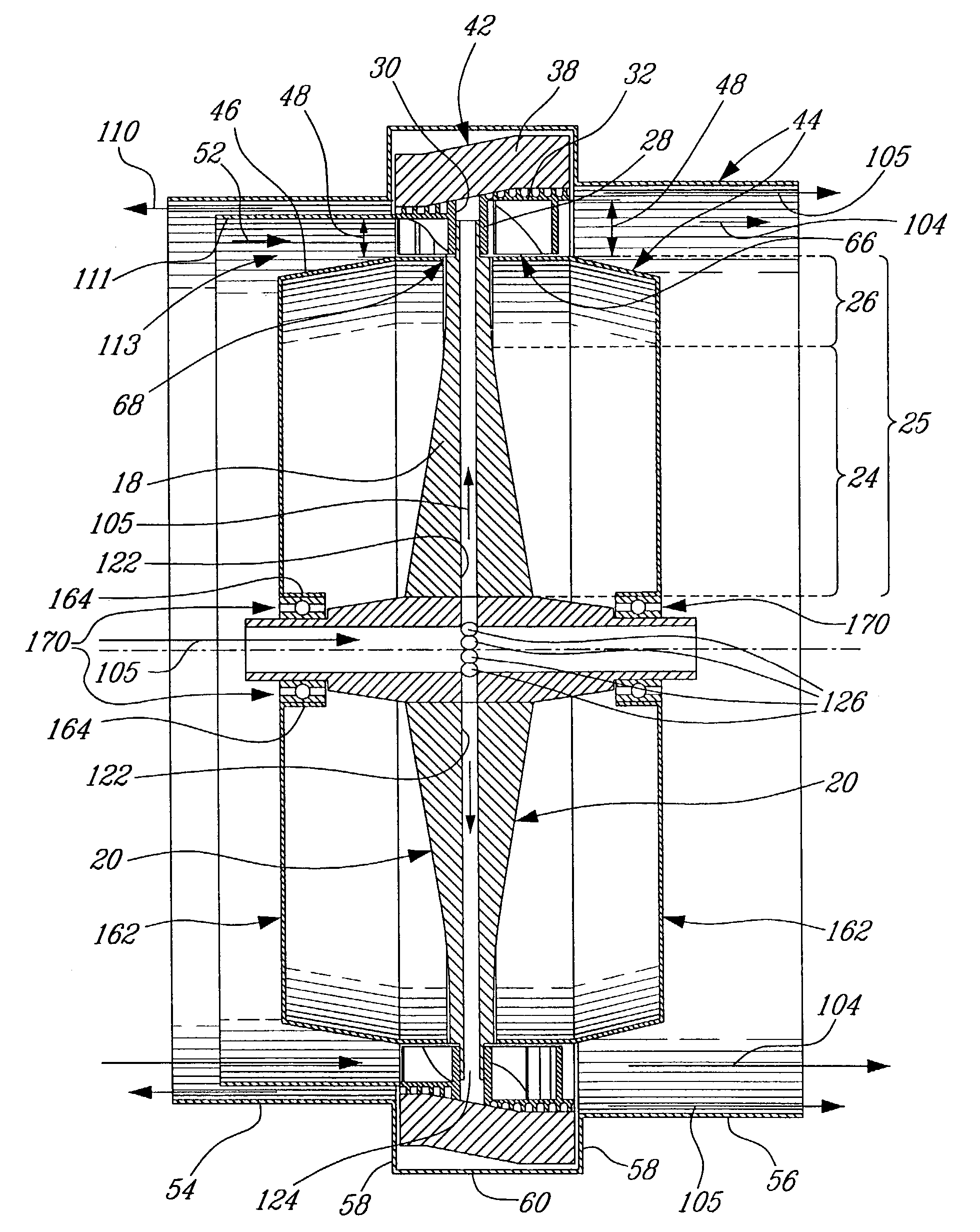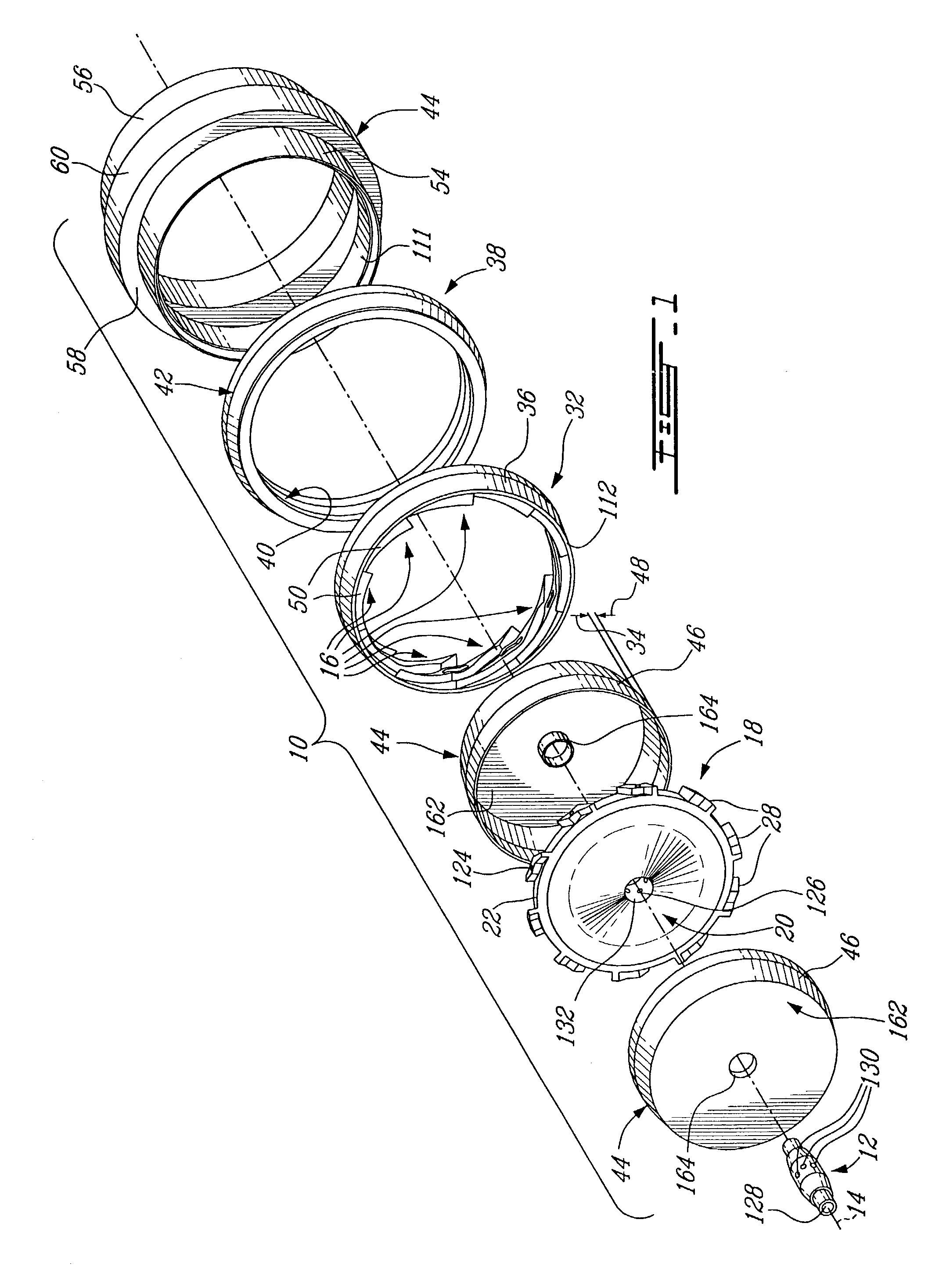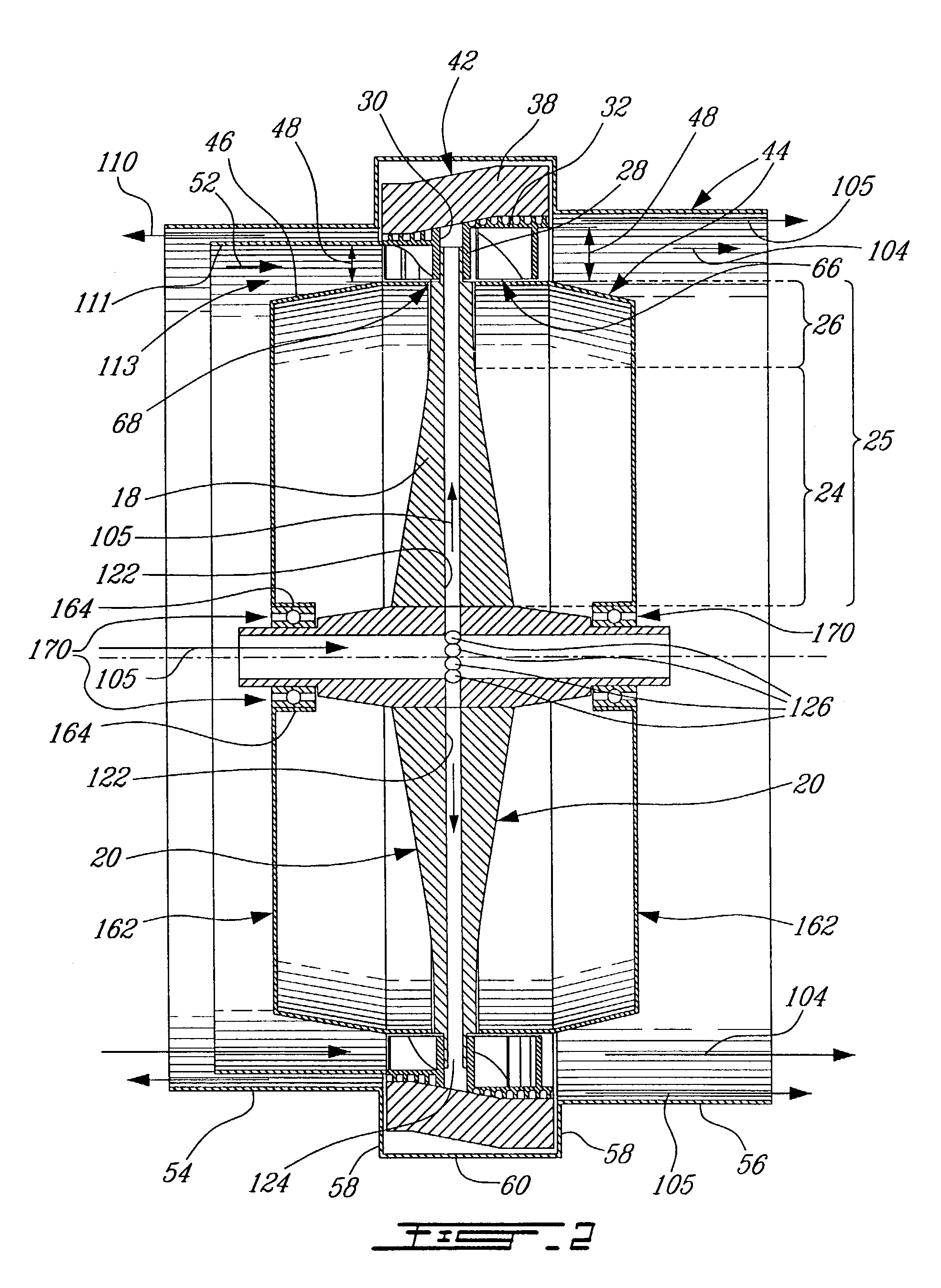Rotary ramjet engine
a ramjet engine and ramjet technology, applied in the field of engines, can solve the problems of more than 20% of the chemical energy stored in the fuel that is converted into more than 20% of the chemical energy stored in the fuel, and the relative low efficiency is imputable to many factors
- Summary
- Abstract
- Description
- Claims
- Application Information
AI Technical Summary
Benefits of technology
Problems solved by technology
Method used
Image
Examples
Embodiment Construction
[0083]Referring to FIG. 1, there is shown, in an exploded view, some of the components of a rotary ramjet engine 10 in accordance with an embodiment of the present invention. The engine 10 is intended to be used for producing an output power about an output shaft 12. The output shaft 12 extends substantially along a shaft axis 14 and is mounted so as to be rotatable about the latter.
[0084]The engine 10 includes at least one, and preferably a plurality of thrusters 16. The thrusters 16 shown throughout the Figures are of the ramjet type. It should, however, be understood that any suitable type of thruster could be used without departing from at least one inventive concept of the present invention.
[0085]As illustrated in FIG. 1, the thrusters 16 are typically disposed substantially symmetrically relative to the shaft axis 14 for rotary motion along a common substantially circular thruster path positioned in a common rotary plane substantially perpendicular to the shaft axis 14. Each i...
PUM
 Login to View More
Login to View More Abstract
Description
Claims
Application Information
 Login to View More
Login to View More - R&D
- Intellectual Property
- Life Sciences
- Materials
- Tech Scout
- Unparalleled Data Quality
- Higher Quality Content
- 60% Fewer Hallucinations
Browse by: Latest US Patents, China's latest patents, Technical Efficacy Thesaurus, Application Domain, Technology Topic, Popular Technical Reports.
© 2025 PatSnap. All rights reserved.Legal|Privacy policy|Modern Slavery Act Transparency Statement|Sitemap|About US| Contact US: help@patsnap.com



